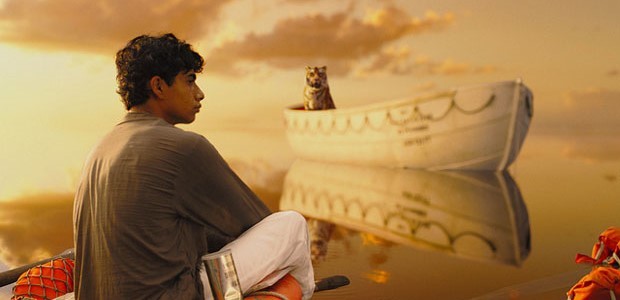Ang Lee’s Life Of Pi makes for a phenomenal time at the cinema, chiefly due to the director’s mastery over the medium. Adapted from a celebrated book deemed unfilmable, the movie presents an astounding tale as a visual extravaganza. Epic in scale yet intimate in its telling, Life Of Pi is about Pi, a young boy (played by Suraj Sharma) shipwrecked in a rescue boat with a ferocious Bengal tiger for company. Without being heavy-handed or deliberate about it, it ultimately is also about God and faith.
Life Of PiI takes place in flashback, with an adult Pi (played by Irrfan Khan) narrating his tale to a writer searching for a story. Therefore, it is established from the onset that Pi will survive his ordeal. Yet, as we go back to his hometown of Pondicherry in India, his father’s zoo and the eventual decision to set sail for Canada with all the zoo animals, the movie becomes engrossing to the point where you actually fear for the boy’s survival. Shot and presented in 3D, LIFE OF PI also makes some fantastic use of the technology. While featuring some breathtaking scenes from Pi’s time stranded in the ocean, Ang Lee also chooses to change the screen-ratio in some key-scenes, especially one featuring flying fish. This leads to an interesting 3D experience, undoubtedly the best of the movie.
Debutante Suraj Sharma carries the film well, though it is Irrfan Khan’s narrator that really brings life to the character. The short interludes when the film returns to present day from the flashback garnish the movie with just the right amount of veracity to make the entire fantastical tale believable. The final act of Life Of Pi is a testing one. Based on your own understanding of what happens, it will either hit home, or feel like a damp squib. And though there may be a less fantastical side to it, I believe that like the mathematical number Pi styles his name on, his story is irrational, yet real.
Rating: 




http://www.youtube.com/watch?v=mX2HBsHbNZM
